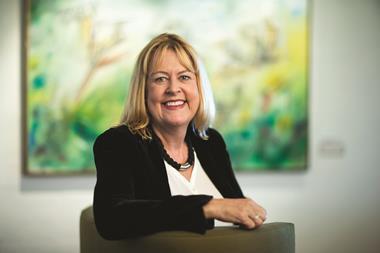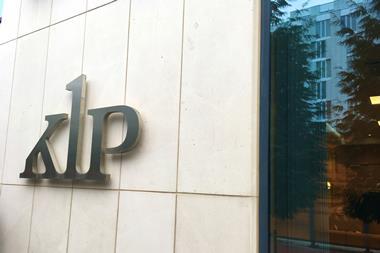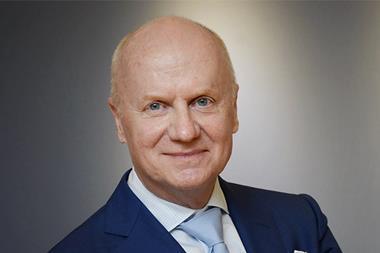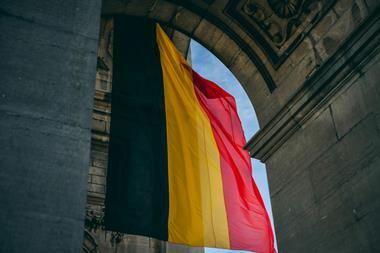Gothenburg-based AP2 is changing its global custodian to JP Morgan for the next three years from its current provider Northern Trust.
JP Morgan announced yesterday it had won the mandate in January to provide a range of asset services to the SEK400bn (€36.3bn) buffer fund, including global custody, trade matching, agency securities financing and collateral management across AP2’s equity and fixed income portfolios, involving SEK290bn of assets.
A spokeswoman for AP2 told IPE the buffer fund was now using Northern Trust as its global custodian, and that the contract JP Morgan had just won was for three years.
JP Morgan said its securities services division had been awarded the business following a 12-month RFP process, with a view to transitioning the assets before the end of this year.
Ola Eriksson, chief operating officer at AP2, said: “JP Morgan’s global franchise, cross-product expertise and innovative solutions, helped us decide they were the right partner for AP2.
“Their scalable platform, integrated solutions, and expert service delivery will help us deliver on our long-term objectives,” he said.
Meanwhile, Allan Nedergaard, Nordic head of platform sales at JP Morgan, said: “This new mandate reinforces our position as the leading securities services provider for institutional clients in the Swedish, and wider Nordics market,” he said.
Swedish premium pension funds’ agency gears up for tenders, inviting comments on draft material
The Swedish Fund Selection Agency (Fondtorgsnämnden, FTN) on Friday published drafts of parts of the procurement material it will use in the tenders it is planning to launch for the investment options to be offered within the revamped premium pension system.
The FTN said: “Publishing the material is part of the Swedish Fund Selection Agency’s market dialogue, which will give the market the opportunity to prepare for upcoming procurements and provide comments on the procurement material.”
The stakes are high for both domestic and international investment managers keen to offer funds on the new procured version of the premium pension system’s platform, since far fewer providers will gain entry than operate on the current funds marketplace, and overall, €100bn of pension assets are set to be divided among their products.
The material now published is in English and consists of procurement instructions, procurement specification and tender documents, and related to equity funds only, though this is only one of the categories of funds the FTN will procure.
However, the fund agreement itself is not included in the draft procurement material just released. Swedish versions are to be published this week.
The FTN said it welcomed written comments on the draft no later than the deadline of 10 March.
Oslo’s municipal pension provider ends 2022 with 0.3% investment loss
In Norway, Oslo Pensionsforsikring (OPF) reported it ended 2022 with a 0.3% investment loss, with asset allocation showing a shift out of cash during the year.
Insurance company OPF yesterday announced in its financial report for the fourth quarter of 2022 and the full year its collective portfolio made an annual value-adjusted return of -0.3%, after the positive 10.2% generated in 2021.
Lars Haram, who was appointed as OPF’s permanent chief executive officer earlier this month, said: “Against the background of last year’s events, this is a result we are satisfied with.”
He said he was confident the company would “also be strong in 2023”.
”Over many years, we have built up our ability to stay the course, and that is very important in times of uncertainty,” said Haram, who was acting CEO since last autumn when the previous leader Åmund Lunde departed.
The solvency ratio of the group’s pensions arm, according to Solvency II rules, rose to 361% during the year 320%, it reported.
OPF’s highest-returning asset category in 2022 was illiquid equities and funds, according to the report, with a 14.5% gain in the year, while liquid equities and funds lost 9.9%.
Asset allocation data in the report showed OPF’s holdings of cash-like instruments had decreased during 2022 from 8.1% to 0.8%, while investment-grade loans and bonds had grown to 15.8% of the common portfolio from 10.7% at the end of 2021.
The weighting of property and infrastructure – an asset category which left OPF with a 2.7% loss in 2022 – shrank to 17.0% at the end of 2022 from 19.7% a year earlier.
OPF’s total group assets rose to NOK127.7bn (€11.7bn) from NOK125.5bn over the year.
To read the digital edition of IPE’s latest magazine click here
























